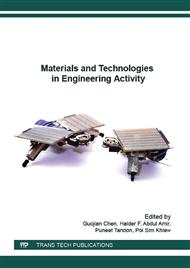p.63
p.68
p.73
p.78
p.82
p.89
p.94
p.99
p.107
Amorphous Silica Micro Powder Additive Influence on Bending Strength of One-Ply Particle Board
Abstract:
The methods and results of experimental investigation on the additive influence of amorphous silica micro powder when mixed in the glue for one-ply particle board are presented in the article. Wooden particles of coniferous and hardwood species as well as glue solution based on carbamide-formaldehyde resin were used for boards manufacturing. The amorphous silica micro powder contained particles 8 μm by the size and specific surface 120...400 m2/g was used in the experiment. The samples were tested to determine their physical-mechanical properties. It was found that 1 % amorphous silica micro powder additive increases the breaking point of one-ply particle board under bending strength by 43%.
Info:
Periodical:
Pages:
82-85
Citation:
Online since:
August 2016
Price:
Сopyright:
© 2016 Trans Tech Publications Ltd. All Rights Reserved
Share:
Citation:


